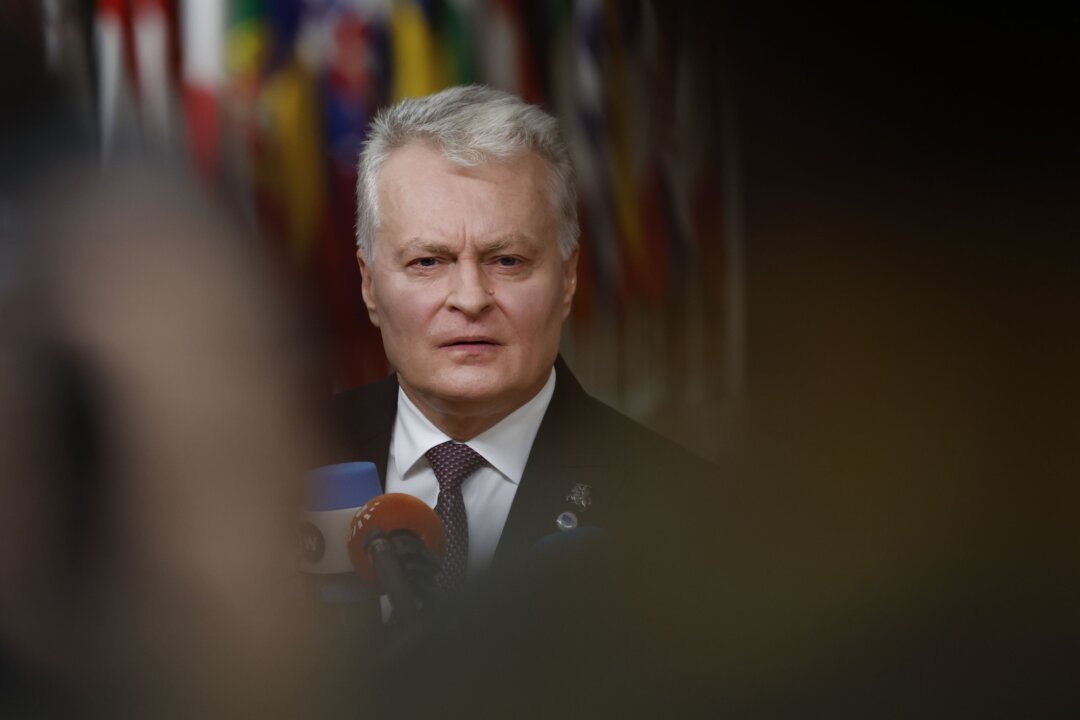Lithuania has pledged 5 percent to 6 percent of GDP for defense, answering President-elect Donald Trump’s call for higher NATO spending.
Lithuania has announced plans to boost its defense spending to between 5 percent and 6 percent of its gross domestic product (GDP), becoming the first NATO country to make a firm commitment to President-elect Donald Trump’s request that allies spend at least 5 percent of gross domestic product (GDP) on defense.
The decision, announced on Jan. 17 by top Lithuanian officials, is driven by the Baltic nation’s determination to confront the threat of Russian aggression. Lithuania, which shares a border with Russia and its heavily militarized Kaliningrad exclave, has repeatedly emphasized the need to bolster its defenses.
Lithuanian President Gitanas Nauseda told reporters after a Jan. 17 meeting of the State Defense Council in Vilnius, the capital of Lithuania, that a historic decision has been taken to nearly double the country’s defense spending. Currently, Lithuania spends a little more than 3 percent of its GDP on defense.
“The possibility of Russian military aggression is still real, but not imminent,” Nauseda said. “We need to increase our efforts to strengthen defense and deterrence significantly, devoting more resources to this end.”
Lithuanian Foreign Minister Kestutis Budrys clarified in a post on X that the country’s commitment to spend between 5 percent and 6 percent of GDP would start in 2026 and continue through 2030.
“Difficult times require bold decisions & leadership,” he wrote. “We call on our allies to follow this lead. The era of passive ’sit-and-wait’ strategies is over.”
The announcement, which comes days before Trump assumes office, makes Lithuania the first NATO ally to formally commit to the 5 percent of GDP spending target that the president-elect has demanded.
Trump has long criticized NATO members for not meeting the alliance’s 2 percent defense spending target and recently proposed a more ambitious 5 percent goal, saying during a Jan. 7 press conference at Mar-a-Lago that “they can all afford it.”
Poland, the current NATO leader in defense spending, has vocally supported Trump’s 5 percent target. However, Warsaw has framed its 5 percent support as an aspirational goal for all NATO members, suggesting that it could take some countries a decade to achieve it. As of now, Poland has not officially declared when it will meet or exceed the 5 percent mark. Poland spent 4.12 percent of GDP in 2024 and projects that will rise to 4.7 percent in 2025.
In backing Trump’s call for the 5 percent target, Polish Defense Minister Wladyslaw Kosiniak-Kamysz told the Financial Times in a recent interview: “If we could afford to go into debt to rebuild after Covid, then we must surely find the money to protect ourselves from war.”
Poland, which shares a border with both Ukraine and Russia, has long argued that greater defense spending is needed to deter Russia. Overall, however, European NATO leaders have offered a mixed response to Trump’s demand for a significant defense spending boost. For instance, France is grappling with the challenges of managing a debt burden exceeding 110 percent of GDP, while Germany is constrained by constitutional limits on additional borrowing.
In 2014, NATO set a target that all members should be spending 2 percent of GDP by 2024.
By the end of 2023, 10 of 31 NATO members had reached the 2 percent goal, although projections published in June 2024 suggest that number could rise to 23 out of 32 in 2024, following Sweden’s accession.
When Trump took office in 2016, only five NATO members met the 2 percent minimum defense spending target; by the end of his presidency, that number had increased to nine.

